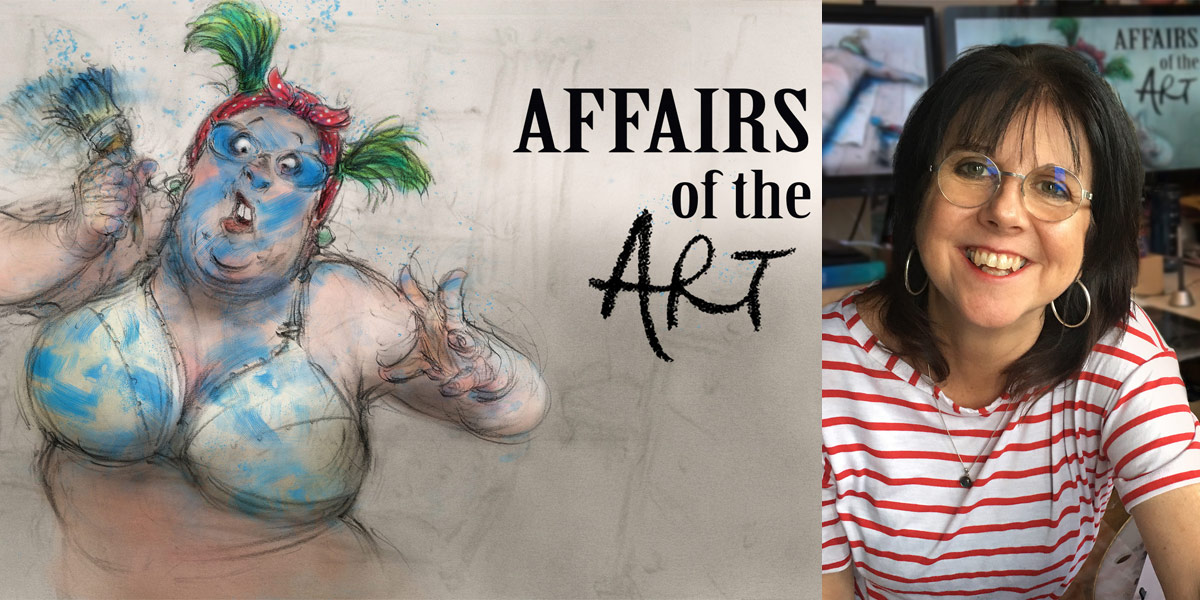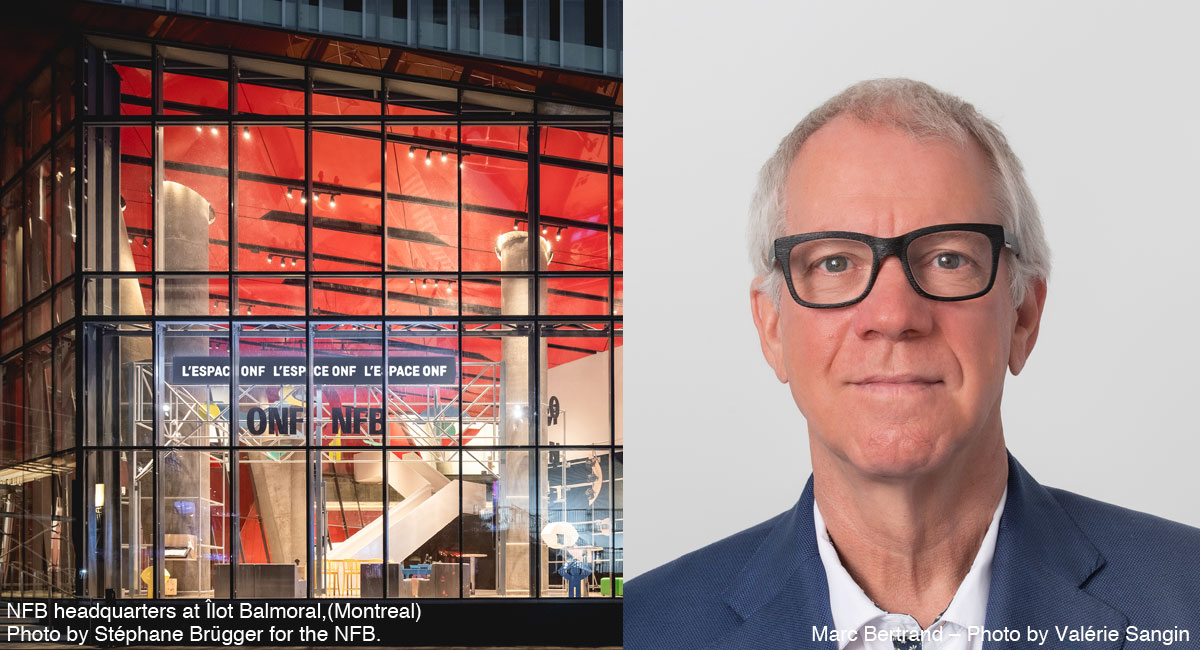This is a special interview with Marc St-Pierre, the collection curator of the National Film Board of Canada. We heard about the bright journey of the animation unit at NFB that have been realizing great animated short films, cultivating the expressive diversity of animation. We hope that this article could be an insightful reference for you to learn about NFB as a potential partner for your future animated film project.
Interview with Marc St-Pierre
Hideki Nagaishi (HN): Could you please briefly let us know the history and mission of the animation studios at NFB?
Marc St-Pierre: In 1942, Norman McLaren was recruited by founder John Grierson to create an animation unit at the National Film Board of Canada, where the primary mission was straightforward and urgent: McLaren and his team produced short films to support Canada’s role in the Second World War.
McLaren was a visionary. He and his team used a creative approach and a rich palette of styles, so by the time the war was over, there was a tradition of experimentation that would blossom in peacetime. Led by McLaren on his own films, Evelyn Lambart, René Jodoin, George Dunning, Grant Munro and others pushed boundaries across a range of animation techniques, including abstract direct animation, stop-motion/pixelation and more.
At the same time, in the ’50s and ’60s there was a successful parallel development, quite apart from this auteur approach. Inspired by the comic style of UPA cartoons, NFB animation became a source of great animated comedies by a new crop of young Canadian animators, such as Gerald Potterton and Kaj Pindal.
In 1966, former McLaren recruit René Jodoin founded the NFB’s French-language animation studio. This led to yet another explosion of creativity, as francophone artists could now work in their own language. As a Quebec national cinema was taking shape, Jodoin’s new studio provided animators across French-speaking Canada with a vital new environment for self-expression.
The French studio has played a vital role in keeping pinscreen animation alive. It was also a trailblazer in another way, working with computer animation pioneer Peter Foldès in the 1970s, then setting up its own computer animation unit. On the English side, the NFB would go on to explore new possibilities in hand-drawn stereoscopic 3D animation.
Canada is a diverse country and it’s vital that NFB storytelling is rooted in every region. The NFB began an important phase of decentralization in the 1970s, one that had rich results for animation when the Winnipeg studio, under Ches Yetman, worked with iconoclastic talents like Richard Condie and Cordell Barker.
In the ’70s and ’80s, women’s filmmaking became a vital force at the NFB, and animation was no exception. The pioneering work of Eve Lambart helped pave the way for distinguished filmmakers like Caroline Leaf, Michèle Cournoyer and Janet Perlman, and today, such directors as Wendy Tilby, Amanda Forbis and Torill Kove.
The NFB in this century remains committed to being an innovator and talent incubator.
Each year, initiatives for emerging animators play a key role in giving new filmmakers the chance to create their first professional works. Oscar nominee Patrick Doyon is just one example.
The NFB has also committed itself to transforming its relationship with Indigenous Peoples, producing acclaimed animated films by Indigenous directors, including Inuit artist Asinnajaq.
HN: Could you please provide a brief introduction on all of NFB’s activities in animation to our readers?
Marc St-Pierre: The NFB has two dedicated animation studios. The NFB French Program’s Animation Studio remains based in Montreal. On the English side, animation and interactive creation have been merged into the Animation & Interactive Studio, with production centres in both Montreal and Vancouver.
Animated works are also being developed at NFB studios across the country, often working in co-production with an NFB animation studio.
In addition to 100% in-house productions, national and international co-productions have become another key avenue of creation, working with talented partners who bring their own innovative stories and animation styles. Aided by new technology, collaborations lead to a vital exchange of knowledge and Canada’s animation tradition is broadened and enriched.
The NFB boasts in-house marketing and communications teams dedicated to the promotion and dissemination of animated works. Our marketing and communications experts become involved early, so that institutionally the NFB is ready to support the launch of new animation films, and then continue to promote works far beyond the festival phase, in communities, in education and, of course, online.
Sharing new animation skills was a key part of McLaren’s legacy and remains in our DNA today. Animators have the time and resources to develop skills here at the NFB, which they can then apply in their independent and commercial work. One key example is Daniel Langlois, who worked at the French Studio’s computer animation unit before founding Softimage.
Each year, the Hothouse (English Program) and Cinéaste recherché(e) (French Program) initiatives help to kickstart the careers of new emerging animators, while the French Studio’s Alambic program is an experimental creative lab offering early-career artists the opportunity to craft original visual stories in the space of a few months.
Workshops, masterclasses and artist’s talks are a key part of NFB outreach. The NFB is an enthusiastic participant in the animation industry, in Canada and around the world, with directors and producers taking part in panel discussions and conferences, and sitting on juries at prestigious festivals.
New animated works are added every month on nfb.ca and the NFB’s partner platforms. The “Animation” section of the NFB site is a content-rich destination offering new releases, retrospectives, playlists and channels across a range of themes, including Indigenous cinema, auteur animation, children’s animation and different animation techniques.
We have two film curators, myself and my colleague Camilo Martín-Flórez, and often we’ll use our Curator’s Perspective series on the NFB Blog to explore the amazing world of NFB animation.
All of this content and creativity is available to Canadian and international viewers free of charge — an unparalleled resource for lovers of auteur animation, and audiences of all ages.
HN: Could you please give us a list of the 10 most successful animated short films among the films NFB has produced so far?
Marc St-Pierre: (In order of the year of release)
The Sand Castle (1977)

Director: Co Hoedeman
– 1977 Oscar® winner – SHORT FILM (Animated)
– Grand Prix (ex æquo) at Annecy International Animation Film Festival 1977
Bob’s Birthday (1993)

Directors: Alison Snowden & David Fine
– 1994 Oscar® winner – SHORT FILM (Animated)
– Short Film Award at Annecy International Animation Film Festival 1995
Ryan (2004)

Director: Chris Landreth
– 2005 Oscar® winner – SHORT FILM (Animated)
– Special Jury Award at Annecy International Animation Film Festival 2004
– “Kodak Award for Best Short Film”, “Award of the (Very) Young Critic”, and “Canal + Award for Best Short Film” at Cannes International Film Festival 2004











